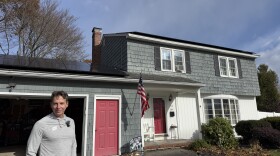The state is out with a draft 10-year plan for managing its forests, with a new focus on recreation and climate change impacts.
The Division of Forests and Lands updates this plan every decade. The new 2020 draft plan is out for public comment until Oct. 15.
It says recreation revenue related to state forests is on the rise, while more stakeholders are worried about balancing recreation with forest health and local economies.
“Whereas a decade ago recreation only played a small role in the responses we heard, this time the pressures of increased recreation, both motorized and non-motorized, were front and center,” the report says. “How then do we strike a balance? How do we ensure that while more people are out enjoying the forest, they aren’t ‘loving it to death’?”
In its goals, the plan mentions recreational trail system maintenance and more focus on law enforcement to protect lands from misuse. It also prioritizes invasive species management and economic support for the timber industry as markets change.
The plan emphasizes climate change, and ways to respond to it through forest management.
“Effects from this slow-moving crisis may include infrastructure problems due to more extreme [weather] events, reduced timber harvesting windows due to warmer winters, and a change in species composition,” the report says. “A healthy, diverse forest will not only be more resilient to the impacts, it will also play a critical role in the capture and storage of carbon, thereby reducing potentially worse consequences."
The report also updates the baseline for the composition of New Hampshire's forests. It says the state's forest cover peaked in 1970 and has declined by an area about the size of Sullivan County since then.
Forests still cover more than 80% of the state – more than anywhere else except Maine. At least 70% of that land is privately owned.
The plan says forest loss in the coming years will hinge on different approaches to housing development – including density, public space, backyards and other issues – as the state's population grows.








